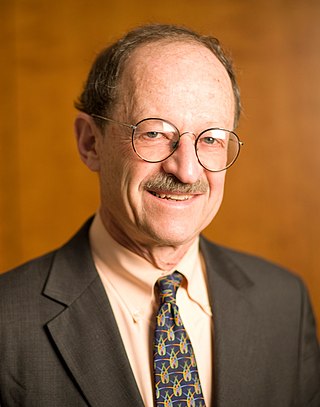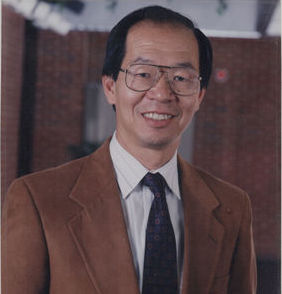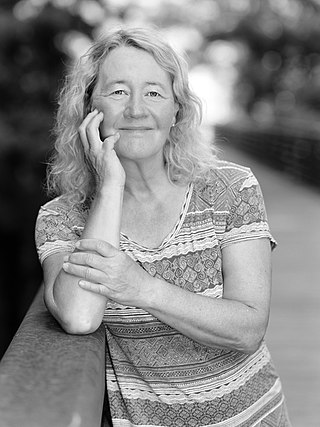| Established | 1958 |
|---|---|
| Research type | Medical research |
Field of research | Genetic research; Cancer; Epilepsy; Birth defects |
| Director | Professor Roger Reddel AO FAA |
| Address | 214 Hawkesbury Road, Westmead NSW 2145 |
| Location | Sydney, New South Wales, Australia 33°48′05″S150°59′32″E / 33.80139°S 150.99222°E |
| Campus | Westmead |
| Affiliations | |
| Website | cmri |
Children's Medical Research Institute (CMRI) is an Australian medical research institute located in Westmead that conducts research into children's genetic diseases. As of 2019 [update] , current research is focused on cancer, birth defects, neurological conditions such as epilepsy, and gene therapy. [1]
Much of CMRI's cancer research focuses on telomeres (including telomerase) and the Alternative Lengthening of Telomeres (ALT) mechanism, which was discovered at CMRI in 1997. [2]
The foundation was founded by Professor Lorimer Dods, who was Australia's first professor of children's health, and Sir John Fulton. The foundation raised a lot of money from early telethons in Australia. [3] Dods eventually gave up his teaching role at the University of Sydney to work with the foundation. [4] In 1968 one of the foundations supporters, Glynde Nesta Griffiths who was a writer, died and she left her estate of £300,000 to the foundation. [5]
The director of the foundation is "the Lorimer Dods Professor". [4]

Telomerase, also called terminal transferase, is a ribonucleoprotein that adds a species-dependent telomere repeat sequence to the 3' end of telomeres. A telomere is a region of repetitive sequences at each end of the chromosomes of most eukaryotes. Telomeres protect the end of the chromosome from DNA damage or from fusion with neighbouring chromosomes. The fruit fly Drosophila melanogaster lacks telomerase, but instead uses retrotransposons to maintain telomeres.

The University of Texas Southwestern Medical Center is a public academic health science center in Dallas, Texas. With approximately 23,000 employees, more than 3,000 full-time faculty, and nearly 4 million outpatient visits per year, UT Southwestern is the largest medical school in the University of Texas System and the State of Texas.

Harold Eliot Varmus is an American Nobel Prize-winning scientist. He is currently the Lewis Thomas University Professor of Medicine at Weill Cornell Medicine and a senior associate at the New York Genome Center.

Elizabeth Helen Blackburn is an Australian-American Nobel laureate who is the former president of the Salk Institute for Biological Studies. In 1984, Blackburn co-discovered telomerase, the enzyme that replenishes the telomere, with Carol W. Greider. For this work, she was awarded the 2009 Nobel Prize in Physiology or Medicine, sharing it with Carol W. Greider and Jack W. Szostak, becoming the first Australian woman Nobel laureate.

WEHI, previously known as the Walter and Eliza Hall Institute of Medical Research, and as the Walter and Eliza Hall Institute, is Australia's oldest medical research institute. Sir Frank Macfarlane Burnet, who won the Nobel Prize in 1960 for his work in immunology, was director from 1944 to 1965. Burnet developed the ideas of clonal selection and acquired immune tolerance. Later, Professor Donald Metcalf discovered and characterised colony-stimulating factors. As of 2015, the institute hosted more than 750 researchers who work to understand, prevent and treat diseases including blood, breast and ovarian cancers; inflammatory diseases (autoimmunity) such as rheumatoid arthritis, type 1 diabetes and coeliac disease; and infectious diseases such as malaria, HIV and hepatitis B and C.

The Children's Hospital at Westmead is a children's hospital in Western Sydney. The hospital was founded in 1880 as "The Sydney Hospital for Sick Children". Its name was changed to the "Royal Alexandra Hospital for Children" on 4 January 1904 when King Edward VII granted use of the appellation 'Royal' and his consort, Queen Alexandra, consented to the use of her name.

Frederick Pei Li was a Chinese-American physician. He is most famous for his discovery, together with his colleague Joseph Fraumeni, of Li–Fraumeni syndrome, which is caused by germline mutations of the p53 tumor suppressor gene and genetically predisposes families to high rates of cancer.
Axel Ullrich is a German cancer researcher and has been the director of the molecular biology department at the Max Planck Institute of Biochemistry in Martinsried, Germany since 1988. This department's research has primarily focused on signal transduction. Ullrich has received Hamdan Award for Medical Research Excellence, awarded by Sheikh Hamdan bin Rashid Al Maktoum Award for Medical Sciences, Dubai, United Arab Emirates in 2008 and Ullrich and his team received the Wolf Prize in 2010.

The John Curtin School of Medical Research (JCSMR) is an Australian multidisciplinary translational medical research institute and postgraduate education centre that forms part of the Australian National University (ANU) in Canberra. The school was founded in 1948 as a result of the vision of Nobel Laureate Sir Howard Florey and was named in honour of Australia's World War II Prime Minister John Curtin, who had died in office a few years earlier.

Carolyn Widney Greider is an American molecular biologist and Nobel laureate. She is a Distinguished Professor of Molecular, Cell, and Developmental Biology at the University of California, Santa Cruz.

The Garvan Institute of Medical Research is an Australian biomedical research institute located in Darlinghurst, Sydney, New South Wales. Founded in 1963 by the Sisters of Charity as a research department of St Vincent's Hospital, it is now one of Australia's largest medical research institutions, with approximately 750 scientists, students and support staff.

Telomerase reverse transcriptase is a catalytic subunit of the enzyme telomerase, which, together with the telomerase RNA component (TERC), comprises the most important unit of the telomerase complex.

Sir Lorimer Fenton Dods was a pioneer of specialised health care for children who founded, with assistance from Dr John Fulton and Douglas Burrows, the Children's Medical Research Foundation. He is considered one of Australia's most influential paediatricians.
Arnold Jay Levine is an American molecular biologist. He was awarded the 1998 Louisa Gross Horwitz Prize for Biology or Biochemistry and was the first recipient of the Albany Medical Center Prize in Medicine and Biomedical Research in 2001 for his discovery of the tumor suppressor protein p53.

Titia de Lange is the Director of the Anderson Center for Cancer Research, the Leon Hess professor and the head of Laboratory Cell Biology and Genetics at Rockefeller University.
Judith Campisi was an American biochemist and cell biologist. She was a professor of biogerontology at the Buck Institute for Research on Aging. She was also a member of the SENS Research Foundation Advisory Board and an adviser at the Lifeboat Foundation. She was co-editor in chief of the Aging Journal, together with Mikhail Blagosklonny and David Sinclair, and founder of the pharmaceutical company Unity Biotechnology. She is listed in Who's Who in Gerontology. She was widely known for her research on how senescent cells influence aging and cancer — in particular the Senescence Associated Secretory Phenotype (SASP).
Kalappa Muniyappa is an Indian molecular biologist and geneticist, known for his researches on the chromatization of DNA and gene targeting. He is a professor and chairman of the department of biochemistry of the Indian Institute of Science and an elected fellow of the Indian National Science Academy, Indian Academy of Sciences and the National Academy of Sciences, India. The Council of Scientific and Industrial Research, the apex agency of the Government of India for scientific research, awarded him the Shanti Swarup Bhatnagar Prize for Science and Technology, one of the highest Indian science awards, in 1995, for his contributions to biological sciences.
Lyn Robyn Griffiths is an Australian academic who serves as Distinguished Professor of molecular genetics at Queensland University of Technology, where she is director of the Centre for Genomics and Personalised Health, the Genomics Research Centre and the BridgeTech Programs. Griffiths is internationally renowned for her work in the discovery of the genetics of migraine headaches.
(Glynde) Nesta Griffiths was an Australian author and philanthropist. Nesta wrote about the houses of New South Wales and left her substantial estate to support the Children's Medical Research Institute. She lived all her life with her elder sister Gwendolin Winifred Griffiths.